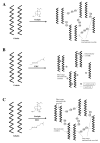Fabrication of Bio-Based Gelatin Sponge for Potential Use as A Functional Acellular Skin Substitute
- PMID: 33202700
- PMCID: PMC7697907
- DOI: 10.3390/polym12112678
Fabrication of Bio-Based Gelatin Sponge for Potential Use as A Functional Acellular Skin Substitute
Abstract
Gelatin possesses biological properties that resemble native skin and can potentially be fabricated as a skin substitute for full-thickness wound treatment. The native property of gelatin, whereby it is easily melted and degraded at body temperature, could prevent its biofunctionality for various applications. This study aimed to fabricate and characterise buffalo gelatin (Infanca halal certified) crosslinked with chemical type crosslinker (genipin and genipin fortified with EDC) and physicaly crosslink using the dihydrothermal (DHT) method. A porous gelatin sponge (GS) was fabricated by a freeze-drying process followed by a complete crosslinking via chemical-natural and synthetic-or physical intervention using genipin (GNP), 1-ethyl-3-(3-dimethylaminopropyl) (EDC) and dihydrothermal (DHT) methods, respectively. The physicochemical, biomechanical, cellular biocompatibility and cell-biomaterial interaction of GS towards human epidermal keratinocytes (HEK) and dermal fibroblasts (HDF) were evaluated. Results showed that GS had a uniform porous structure with pore size ranging between 60 and 200 µm with high porosity (>78.6 ± 4.1%), high wettability (<72.2 ± 7.0°), high tensile strain (>13.65 ± 1.10%) and 14 h of degradation rate. An increase in the concentration and double-crosslinking approach demonstrated an increment in the crosslinking degree, enzymatic hydrolysis resistance, thermal stability, porosity, wettability and mechanical strength. The GS can be tuned differently from the control by approaching the GS via a different crosslinking strategy. However, a decreasing trend was observed in the pore size, water retention and water absorption ability. Crosslinking with DHT resulted in large pore sizes (85-300 µm) and low water retention (236.9 ± 18.7 g/m2·day) and a comparable swelling ratio with the control (89.6 ± 7.1%). Moreover no changes in the chemical content and amorphous phase identification were observed. The HEK and HDF revealed slight toxicity with double crosslinking. HEK and HDF attachment and proliferation remain similar to each crosslinking approach. Immunogenicity was observed to be higher in the double-crosslinking compared to the single-crosslinking intervention. The fabricated GS demonstrated a dynamic potential to be tailored according to wound types by manipulating the crosslinking intervention.
Keywords: biocompatibility; carbodiimide; gelatin sponge; genipin.
Conflict of interest statement
The authors declare no conflict of interest.
Figures






References
-
- Advanced Wound Care Market to Reach USD 15.59 billion by 2027; Innovation in Treatment Methods to Offer Rewarding Breaks, States Fortune Business InsightsTM. [(accessed on 21 July 2020)]; Available online: https://www.prnewswire.com/news-releases/advanced-wound-care-market-to-r....
-
- Recent Facts on the Global Halal Market and the Role of Halal Certification. [(accessed on 21 July 2020)]; Available online: https://www.sgs.com/en/news/2015/11/recent-facts-on-the-global-halal-mar....
-
- Cahn B., Lev-Tov H. Cellular- and Acellular-Based Therapies: Skin Substitutes and Matrices. In: Alavi A., Maibach H., editors. Local Wound Care for Dermatologists. Updates in Clinical Dermatology. Springer; Cham, Switzerland: 2020. pp. 139–151.
Grants and funding
LinkOut - more resources
Full Text Sources
Miscellaneous

